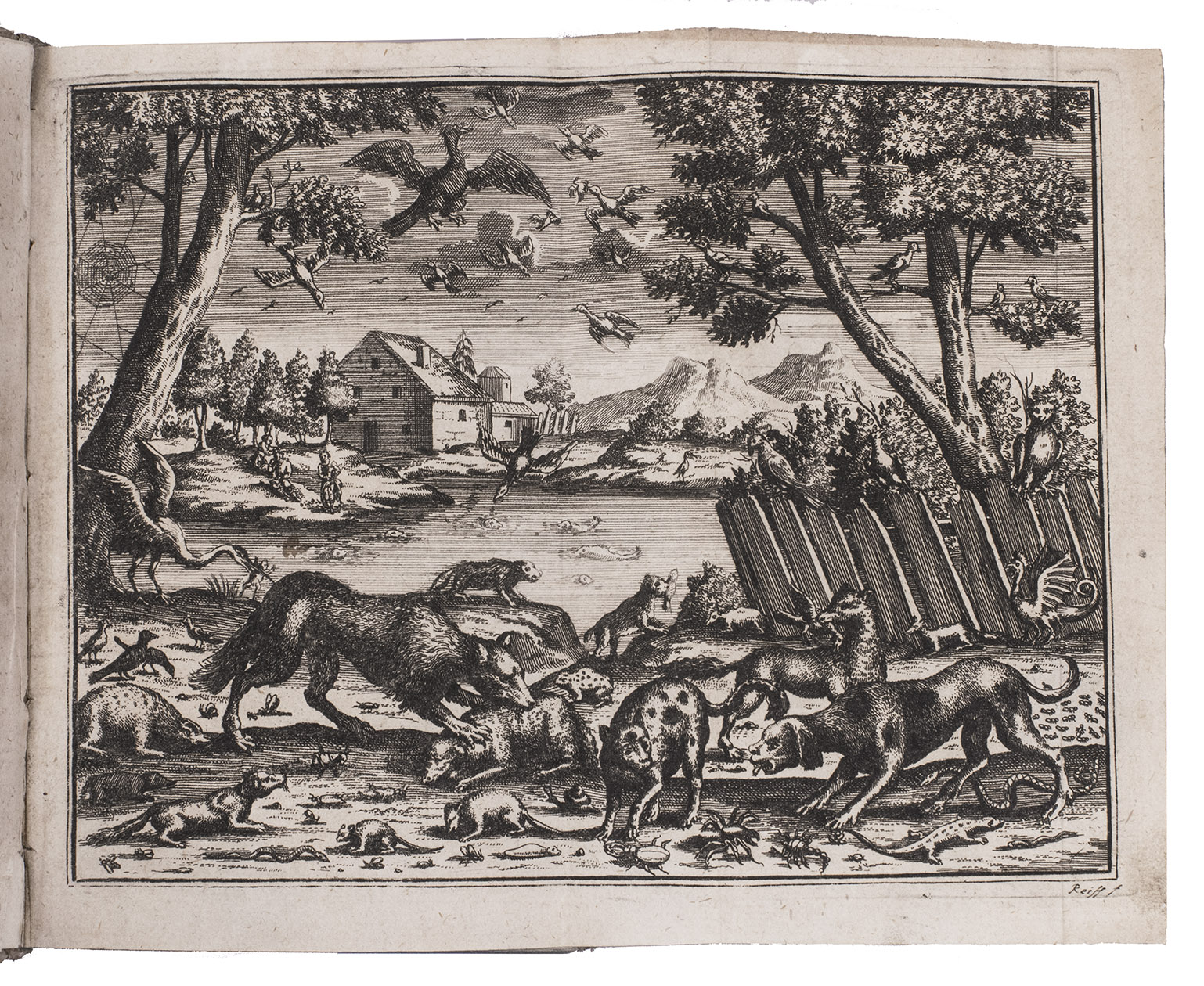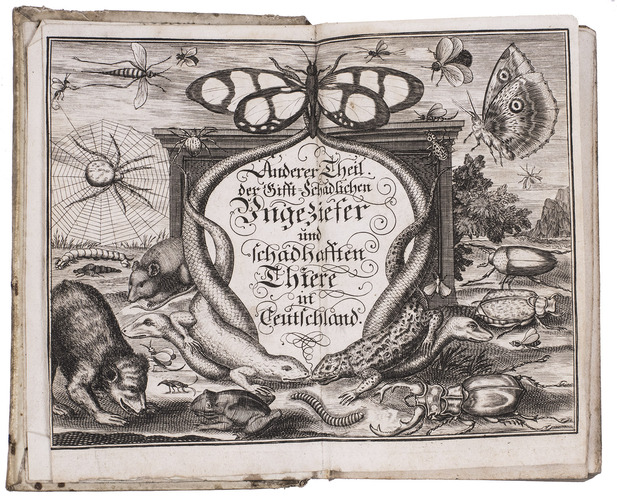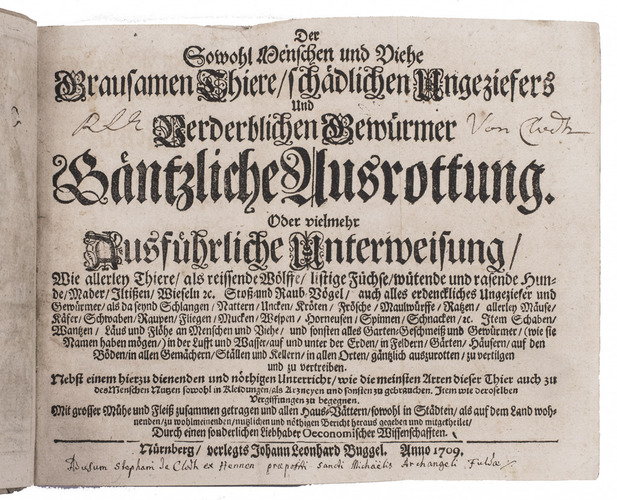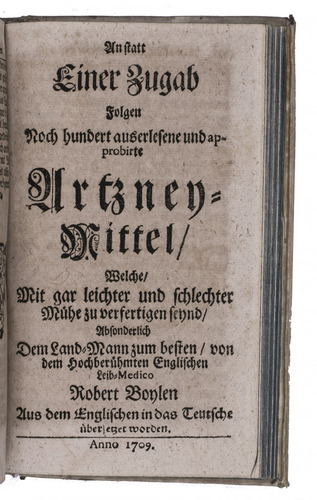[KRAFFT, Abraham Friedrich].
Der sowohl Menschen und Viehe grausamen Thiere, schädlichen Ungeziefers und verderblichen Gewürmer gäntzliche Ausrottung.
Nürnberg, Johann Leonhard Buggel, 1709-1712. 2 volumes. 8vo. Each volume with a folding illustrated engraved title-page and a folding letterpress title-page, and a larger folding engraved plate in volume II. Contemporary but not uniform vellum. [22], “699” [= 697], [23]; [38], 944, [48] pp. plus 2 folding letterpress title-pages and the 3 engravings.
€ 4,500
First edition, rarely found complete, of a detailed account of animals that are harmful to people and to their livestock, the treatment of bites, illnesses and poisonings they cause and instructions for their extermination. It covers animals on land, in water, in the air and underground. The large folding plate in vol. II shows 38 insects, including 14 caterpillars, and the two engraved title-pages for volumes I and II show well over 50 (vol. I) about 25 (vol. II) animals, not counting a large group of ants and many birds in the distance in the former. The book also provides information about uses of the (dead) harmful animals for making clothes and medicines, and includes many medicinal recipes. The animals discussed include wolves, foxes, mad dogs, birds (including birds of prey), snakes, frogs, toads, rats, mice, moles, beetles, caterpillars, bed bugs, lice, fleas and other insects, spiders, snails and other molluscs, various kinds of worms and even a dragon and basilisk (the latter illustrated in the engraved title-page to volume I: it looks more cock-like than snake-like, so most people would now call it a cockatrice, but the two have long been used almost interchangeably). Krafft notes that dragons are rarely or never found in Germany but says one was found in Bohemia a few years ago and that they are more common in Nubia, Libya and the largest ones in "Indien", probably meaning the East Indies and perhaps based on reports of the Komodo dragon.
With an owner's inscription of Stefan von Clodt (1674-1737), Vicar General and Provost of Michaelsberg in Fulda, on the title-page of vol. I. Somewhat browned (vol. I only slightly) and with an occasional small stain, but still in good condition. The binding of vol. I is in very good condition, with only a few small worm holes in the hinges; vol. II is rubbed and damaged, lacking the lowest 3 cm of the backstrip. A very detailed source of information on animals regarded as pests, from both a medical and a farming and gardening perspective. Lindner, Jagdliteratur 11.1171.01 & 11.1173.01; VD18 11041935 (= 90643208 & 90643224); cf. Horn & Schenkling 12340 (with 1713 ed. of vol. I).
Related Subjects:















